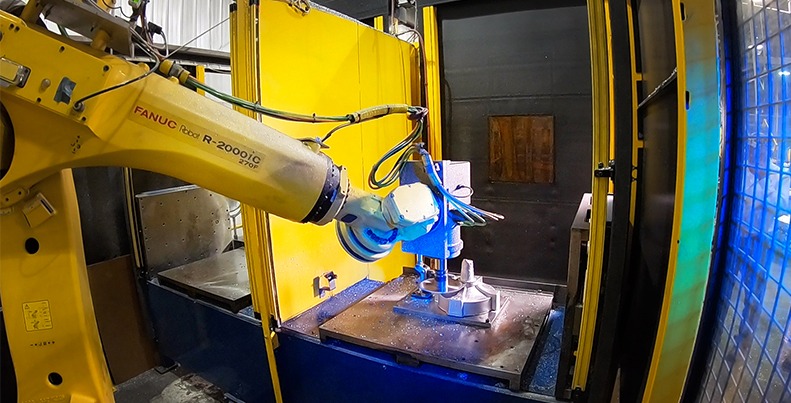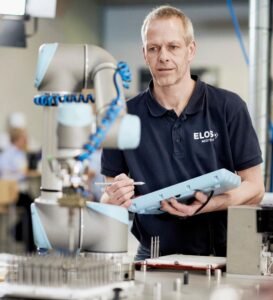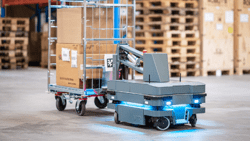Today, robotic automation is viable for companies big and small in the manufacturing industry. The robotics industry is growing, becoming more common in workplaces throughout the US.
Robotics empower employees to widen their skillsets and be successful in their role.
For this article, we met with NEFF, leading experts in industrial automation, to discuss robotics in the manufacturing industry.
Businesses automate to…
Robots can be used in different ways. While some “lights out” factories exist, not all robots are used to supplement a workforce. For example, cobots rarely replace employees; instead they assist employees or adapt employee job functions from laborious, repetitive tasks to those that requires more thought and human qualities. Robots take the mundane out of the day, freeing your employees to complete specialized tasks.
To remove gating from castings, we use an industrial robot.
A key component of this robot is safety. Instead of manually standing in front of a band saw and hand-cutting parts, employees simply load parts onto a saw fixture. This makes the task less risky and less labor-intensive. We also implement full guarding and a light curtain to keep employees safe as the robot runs.
The industrial robot also increases cost efficiency by reducing scrap. It creates consistent cuts, leading to higher machining accuracy and more repeatable products.

Traditionally, polishing is a labor-intensive art of pressure and finesse.
A polishing robot alleviates heavy labor, making polishing heavy, cumbersome parts easier. It also turns the art into a science by providing consistent pressure at specified locations – creating a repeatable surface finish.

Collaborative robots or “cobots” can be defined as “a robot designated for direct interaction with a human within a defined shared workspace.”

Perhaps the key benefit of cobots is that they place automation control back into the hands of technicians and operators due to their ease of programming and interaction.
Universal Robots are a very fast growing industry with an ecosystem of tool attachments such as grippers and sanders.
Some people describe cobots as “employees that never leave.” Cobots can work around the clock, and as your needs change, they are easily redeployed into a new job.
Mobile Industrial Robots or MiR are used for transportation tasks such as pulling carts and lifting pallets.
They use laser sensors and camera systems to navigate a facility. Essentially, the robot creates a map of your shop floor. Programmers can pinpoint locations for the robot to travel to. As obstacles arrive or pathways change, the robot can easily learn and adapt.
The key advantage of MiR is that they prevent employees from disrupting their work and leaving their stations, therefore increasing efficiency.

Robotics and automation are always improving. In the upcoming years, we expect to see more human integration and collaboration with robots, robots collaborating with other robots, and more advanced AI software.